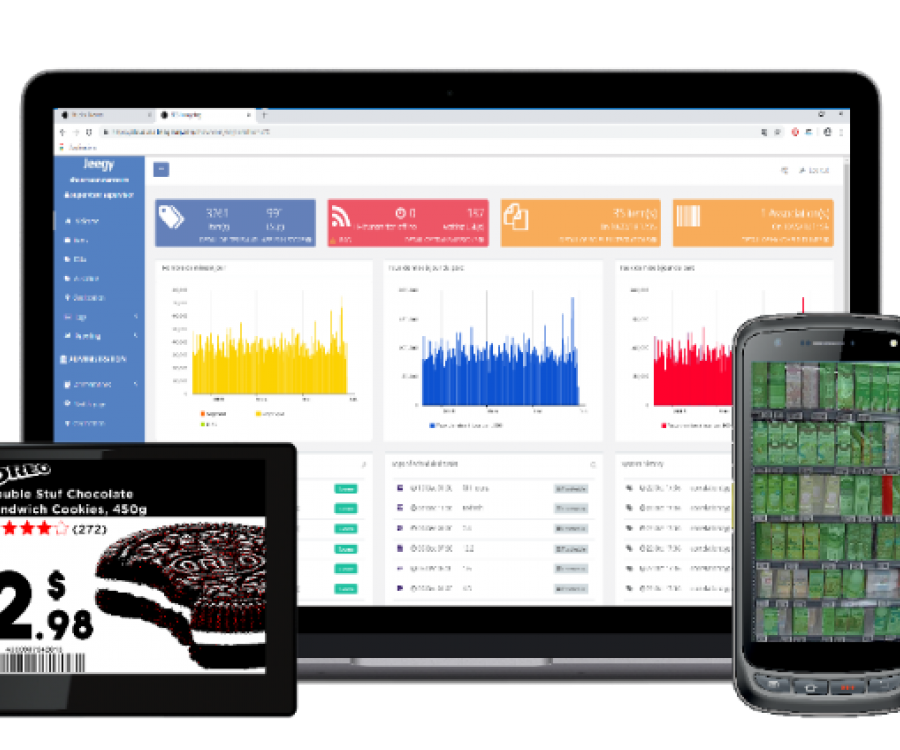The German drugstore chain dm recently equipped nearly 25,000 of its employees with smartphones at its stores to improve merchandise management processes. Instead of scanning each individual item, employees are now able to interact with an entire product group right at the shelf. The barcodes are processed in real-time. Relevant barcodes are highlighted on the smartphone display thanks to augmented reality.
The latest generation of mobile data collection also opens up new possibilities when it comes to the customer experience. In this interview, Ulrich Hieber, Sales Manager Germany and Austria at Scandit, illustrates these options.

Mr. Hieber, what are the advantages of smart devices compared to barcode or handheld scanners?
Hieber: Generally, smart devices are far more cost-effective. The combination of smart device and high-quality scanning software also adds new dimensions to mobile data collection. For example, our MatrixScan solution offers a feature that is able to scan multiple barcodes at the same time. Everything that can be captured with the camera and shown on the display can be processed simultaneously. Corresponding augmented reality visualization then shows the collected data. This drastically speeds up merchandise management processes and makes them more intuitive.
The software scans multiple barcodes at the same time?
That’s right. Added to this are augmented reality features that pertain to the area of differentiation. Sometimes labels have more than one barcode. Yet not all of them are necessarily needed for inventory intake. In this instance, the employee can differentiate and choose to only scan the barcode that is really required to update inventory levels. The software highlights this in color to give the user direct feedback. He or she only receives the information he/she truly needs. The entire process happens automatically, without the need for the employee to worry about entering the correct information.

Does the device give feedback if it was unable to scan a barcode?
We also addressed this issue and created a visual way to display barcodes that have been scanned but have not been decoded yet. Depending on the programming, the barcode is then highlighted with a green border. Once it has been decoded, it is fully highlighted in green. Barcodes that have been recognized but are irrelevant in a certain setting are highlighted in a different color based on what is most productive for the respective process.
It might also be interesting for employees to make a specific selection. This allows them to find certain items faster. Armed with the respective code, the employee can simply walk past the shelf and filter out the desired product. What’s more, the employee can also verify prices right at the shelf because the device can capture both barcode information and alphanumeric data. If the price is wrong, the employee is able to take action right on-site.
What are some concrete retail scenarios?
While mobile data capture offers great opportunities for merchandise management improvement, it also supports associates on the sales floor. Especially in areas that require more consulting services, such as fashion retail, mobile data capture can offer additional information. If an item is not available in the requested size, the associate can check the inventory by using the barcode and find out if this item is available at another store. Another option would be to order the item online in-store and have it directly shipped to the customer’s home.
Service options such as click and collect can likewise be sped up thanks to mobile data capture solutions. The store associate can quickly find the product via the order slip. For customers, this means spending less time waiting in line and better service.

Are customers also able to benefit from mobile data capture?
Customers benefit from additional product information via an app. In this case, we offer a so-called Software Development Kit, which can be integrated into respective solutions such as retailer apps.
Our solution becomes relevant when it comes to food allergies or vegan products for instance. The app allows you to store specific product criteria. Based on the barcode, the app then informs the customer about the products that fall into these categories or not. These criteria can then be visually indicated on the display. Self-scanning is another application worth mentioning. In this case, customers can scan items with their own smartphones while they shop and subsequently only have to pay for their purchases at the POS or a designated terminal. In doing so, customers can avoid long checkout lines, which improves the shopping experience.










